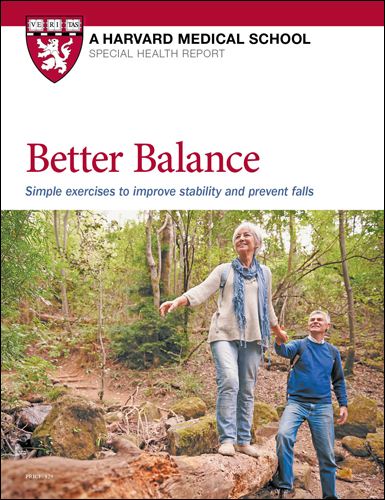The life-altering consequences of falling
Falls are common because the risk of falling presents itself in so many aspects of daily life. Routine acts—such as getting out of bed, going to the bathroom, taking a shower, or getting in and out of a tub—can be far riskier than most people realize. Losing your balance and falling can mean just a few bumps and bruises, or more serious injuries that require hospital treatment. In some cases, a disabling fall or repeated falls may make independent living untenable, resulting in a move to a nursing home. In the United States, unintentional falls are also the No. 1 cause of injury-related deaths among adults ages 65 and older.
Fractures
While broken bones in the limbs are a very common injury from falls, hip fractures are considered the most serious types of fractures—often resulting in permanent disability and sometimes death. The risk of hip fractures increases with age. Each year, according to U.S. government hospital surveys, more than 318,000 people over 65 are hospitalized for hip fractures, and more than 88% of hip fractures occur as a result of falls. Hip fractures often lead to premature death.
Traumatic brain injury
Falls are the single most significant cause of traumatic brain injury, leading to nearly half of hospitalizations for this type of injury. Brain injuries can result from something as simple as tripping on a sidewalk or falling in the shower. They can lead to permanently impaired mental abilities and emotional instability. Brain injuries also have been linked to a higher risk of developing dementia. The initial symptoms of a traumatic brain injury may occur immediately or may be delayed for many hours after the fall.
Neck injuries
Falls can also involve the neck, producing a range of injuries from mild to serious:
Strains and sprains. The former affects the muscles, and the latter is an injury to the ligaments. Strains and sprains are among the less serious—but still painful—neck injuries that commonly result from falls.
Herniated disc. This type of injury happens when the cushion between two spinal bones (vertebrae) is squeezed out of position, often putting pressure on a nerve where it exits the spine. Injuries can result from a sudden twist or jerk of the neck that may occur during a fall.
Fracture of the cervical spine. Among younger people, these bones in the neck often can be fractured by a hard impact or long fall. Less force is needed to produce fractures in older people whose bones have begun to weaken.
Cervical dislocation. This type of serious injury occurs when the bones of the neck are pushed out of alignment, usually by a fracture. It requires immobilization of the neck and immediate medical care (often surgery) to prevent damage to the spinal cord.
Spinal cord injury. This is by far the most serious of neck injuries. It usually results from a neck fracture, dislocation, or both. Spinal cord injuries in the upper-most region of the spine are generally fatal. Patients who survive usually develop paralysis of the arms and legs and may need the assistance of a breathing machine (respirator).
Back injuries
Tripping or falling a short distance can cause back injuries as a result of the impact itself or excessive twisting of the spine. They may simply cause temporary back pain. But older people are more likely to suffer vertebral compression fractures, nerve compression, or damage to the spinal cord. These injuries can cause extreme pain or pressure in the neck, head, or back; tingling or numbness in the arms and legs; and difficulty with walking or balance.
Eye injuries
Not only does poor eyesight contribute to falls, but falling is a common cause of trauma to the eye and its surrounding structures, such as bruising (black eye) and fractures of the orbital bone. A 2021 study found that older U.S. adults suffer nearly 1,400 fall-related eye injuries each year that lead to an emergency room visit. Fall-related injuries to the eye were 23 times as likely to lead to a hospital stay as eye injuries not related to falls.
Fear of falling
One of the unrecognized consequences of falling is the emotional toll it takes. Even if people don’t have a lasting injury due to a fall, they are likely to develop a fear of falling in the future. Such a fear can lead to anxiety and an overuse of caution in daily situations. People who have fallen might start to avoid activities they previously enjoyed.
Fear of falling may be rational, but it’s not helpful. It can restrict your regular activities and cripple your independence. When faced with an unsteady situation, you’re likely to stiffen your body in anticipation of falling. This can actually make falls more likely by impeding your mobility and balance. You’re also more likely to get hurt if you fall.













